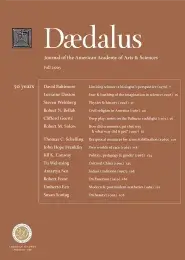Innovation & repetition: between modern & postmodern aesthetics (1985)
It is not by chance that modern aesthetics and modern theories of art (and I mean by “modern” those born with Mannerism, developed through Romanticism, and provocatively restated by the early twentieth-century avant-gardes) have frequently identified the artistic message with metaphor. Metaphor (the new and inventive one, not the worn-out catachresis) is a way to designate something by the name of something else, thus presenting that something in an unexpected way. The modern criterion for recognizing the artistic value was novelty, high information. The pleasurable repetition of an already known pattern was considered, by modern theories of art, typical of Crafts–not of Art–and of industry.
A good craftsman, as well as an industrial factory, produces many tokens, or occurrences, of the same type or model. One appreciates the type, and appreciates the way the token meets the requirements of the type: but the modern aesthetics did not recognize such a procedure as an artistic one. That is why the Romantic aesthetics made such a careful distinction between “major” and “minor” arts, between arts and crafts. To make a parallel with sciences: crafts and industry were similar to the correct application of an already known law to a new case. Art, on the contrary (and by art I mean also literature, poetry, movies, and so on) corresponded rather to a “scientific revolution”: every work of modern art figures out a new law, imposes a new paradigm, a new way of looking at the world.
Modern aesthetics frequently forgot that the classical theory of art, from ancient Greece to the Middle Ages, was not so eager to stress a distinction between arts and crafts. The same term (techne, ars) was used to designate both the performance of a barber or a shipbuilder, the work of a painter or a poet. The classical aesthetics was not so anxious for innovation at any cost: on the contrary, it frequently appreciated as “beautiful” the good tokens of an everlasting type. Even in those cases in which modern sensitivity enjoys the “revolution” performed by a classical artist, his contemporary enjoyed the opposite aspect of his work, that is, his respect for previous models.1
This is the reason why modern aesthetics was so severe apropos the industrial-like products of the mass media. A popular song, a TV commercial, a comic strip, a detective novel, a Western movie were seen as more or less successful tokens of a given model or type. As such they were judged as pleasurable but nonartistic. Furthermore, this excess of pleasurability, repetition, lack of innovation, was felt as a commercial trick (the product had to meet the expectations of its audience), not as the provocative proposal of a new (and difficult to accept) world vision. The products of mass media were equated with the products of industry insofar as they were produced in series, and the “serial” production was considered as alien to the artistic invention.
. . .
